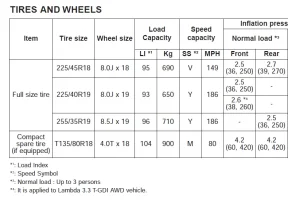The TPMS data is transmitted wirelessly from the wheels to the dash. If you put the car on a hoist and took all four wheels off and stacked them next to the car, the TPMS would still report the pressures in the four locations - LF, RF, LR, RR even though there are no wheels mounted in those locations. That's because the TPMS system has "connected" each sensor to a location. So, when the mechanic rotates the tires, that connection points to the wrong locations. Since the pressures are supposed to be 36 for the fronts and 38 for the rears, the mechanic must change the pressures after rotating. If he doesn't, the fronts will be 38 and the rears will be 36. Three days after my rotation, my dash is reading 38 for the fronts and 36 for the rears. That means one of two things -- (1) the mechanic did not change the pressures after rotating or (2) the TPMS is still connecting with the sensors in the previous locations.





